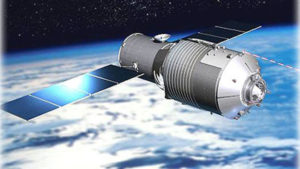
All Eyes Set For Chinese Space Lab Crash, ISRO Too Burnt Night Oil To Keep Vigil
New Delhi: Scientists at the Indian Space Research Organization (ISRO), who are keeping a constant vigil at the 8-tonne Chinese Space Laboratory (expected to crash on earth today), said that most likely the crash site will not happen to be in India. But despite the hope, they are they are keeping a close watch amidst uncertainty of place, it would land.

The Tiangong-1 body may turn into a fireball as it comes into contact with the Earths’ dense atmosphere, but most of it may get burned in the atmosphere itself. China on Friday said that they are very hopeful that large pieces may not be able to reach ground surface due to the burning. A Scientist from the ISRO agency puts the estimates of its falling anywhere between the latitudes of 43 degrees north and 43 degrees south. There is also a strong likeliness of its falling into the Pacific Ocean, but with a possibility of it changing the path due to strong atmospheric conditions prevailing on its way, according to the Scientists.
The Indian side of Scientists from the Agency had arranged a special team set up to monitor the falling of space debris as it approaches the earth’s atmosphere. The team is busy working overnight in the city of Bengaluru.

The Tiangong-1 space research lab was launched in September 2011 and a crucial step in China’s initiative to build its own space station. The spacecraft was a living space for many Chinese astronauts on several occasions. It was to be a controlled re-entry for the space station, but in late September, the Chinese authorities confirmed that the situation of its crash for the space lab is out of control. If the case was to be in control, it would have been guided into the Earth’s atmosphere into the ocean. But for this one it’s not at all possible.
There is no certainty over any of its parts surviving the scorching flight through the atmosphere.
If pieces make a fall to the surface, they’ll likely fall in the ocean waters or the middle of nowhere. Only one person has ever reported being hit by falling space debris of such incidents. If you do come across to see any parts of it, it is obvious that you stay away and call authorities because it may contain toxic propellants like hydrazine.
Tiangong-1 is a prototype space station, the first such initiative, launched by the Chinese Government. Once in space the station serves as a manned laboratory and also as a test bed for demonstrates orbital rendezvous and docking capabilities. The date of the launch was 29 September 2011 through unmanned aboard a Long March 2F/G rocket.
You May Also Read: Chinese Space Station ‘Heavenly Palace 1’ May Turn Its Crashing Site Into Hell